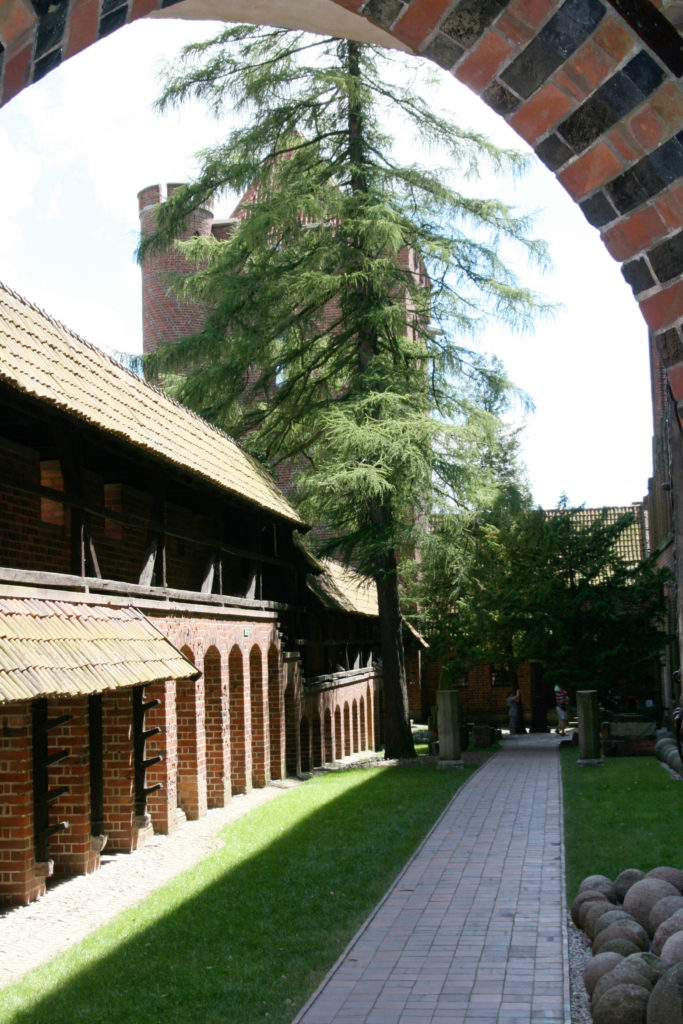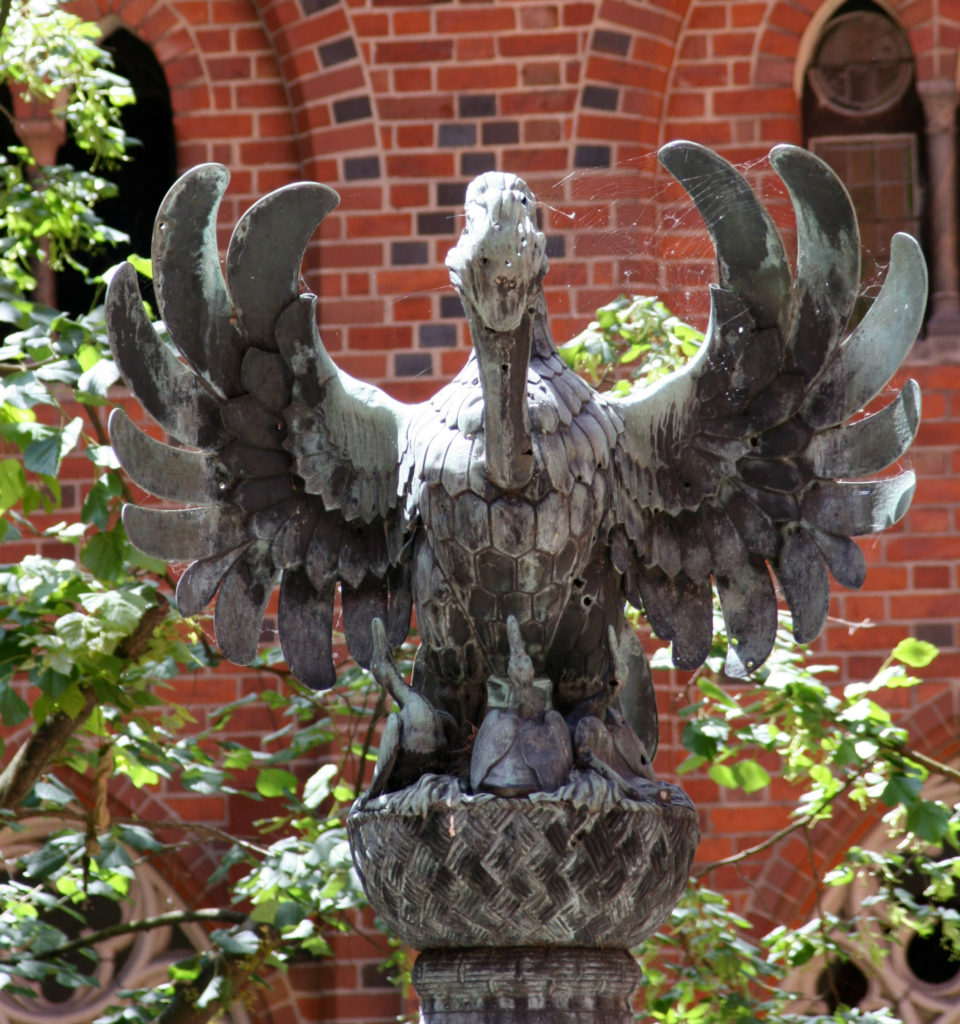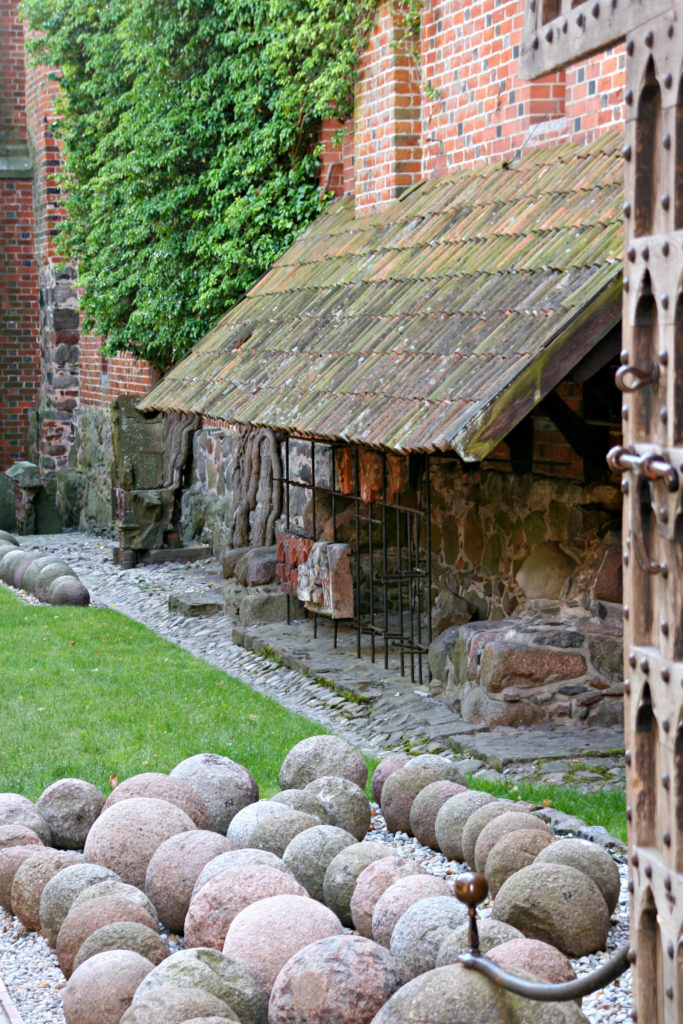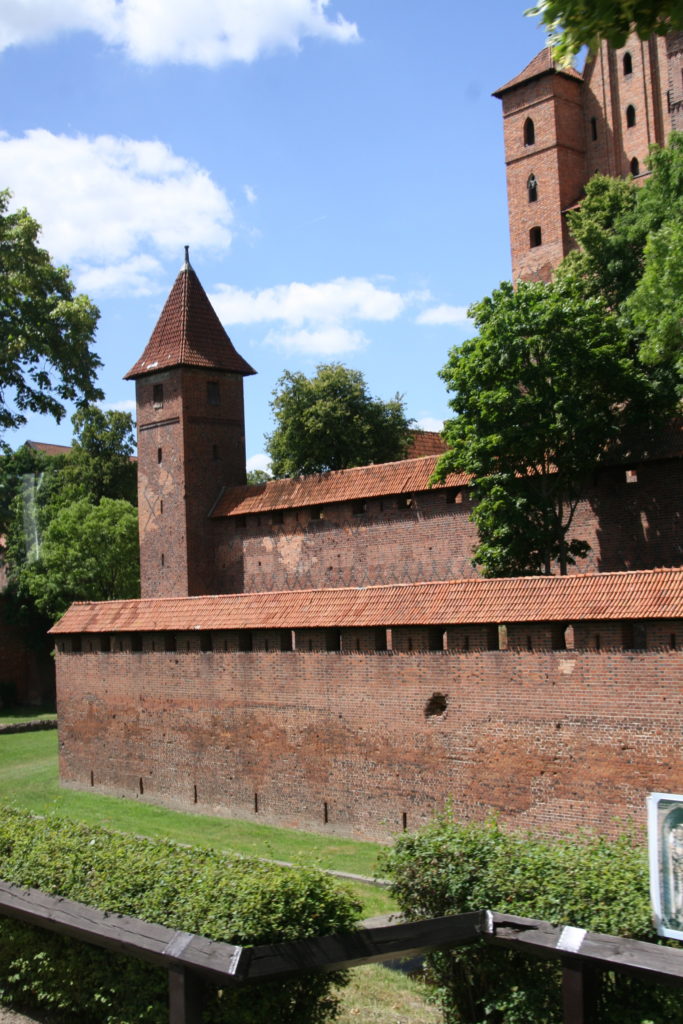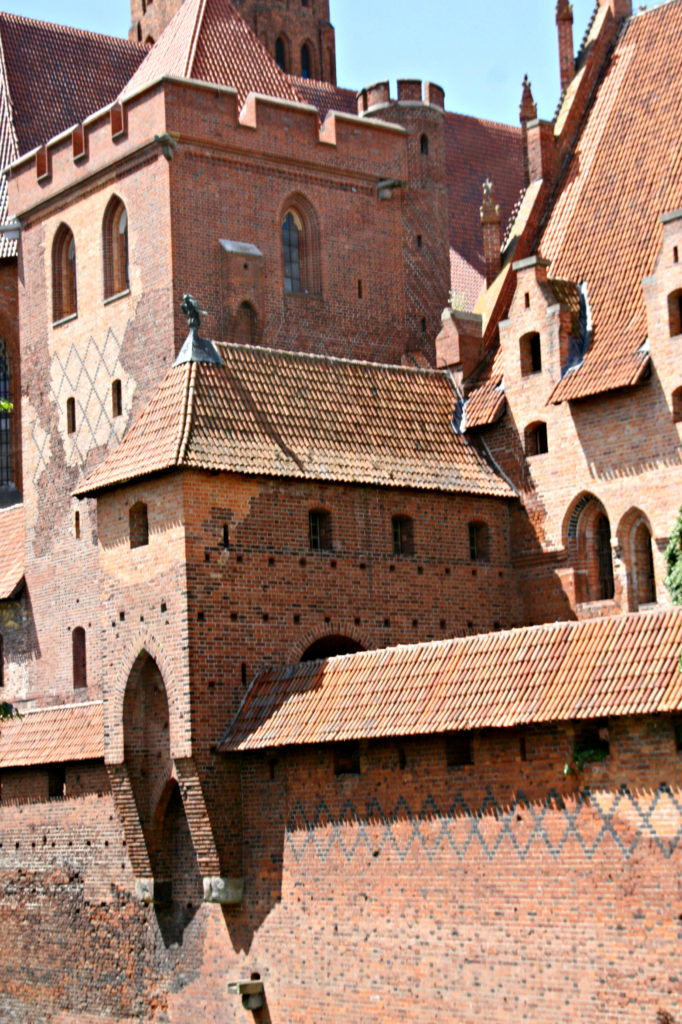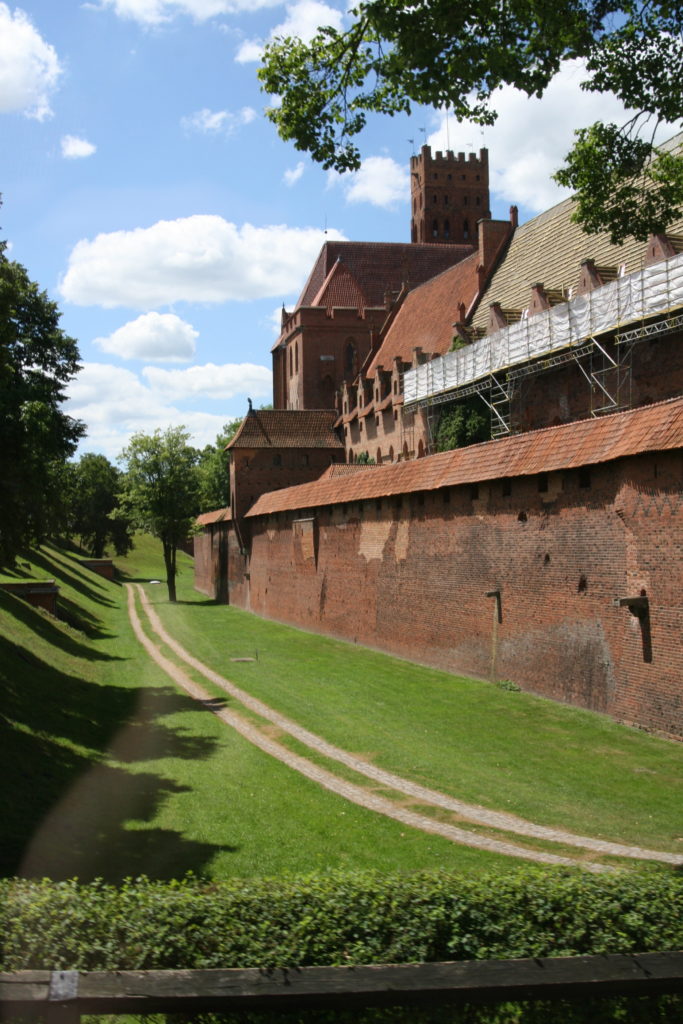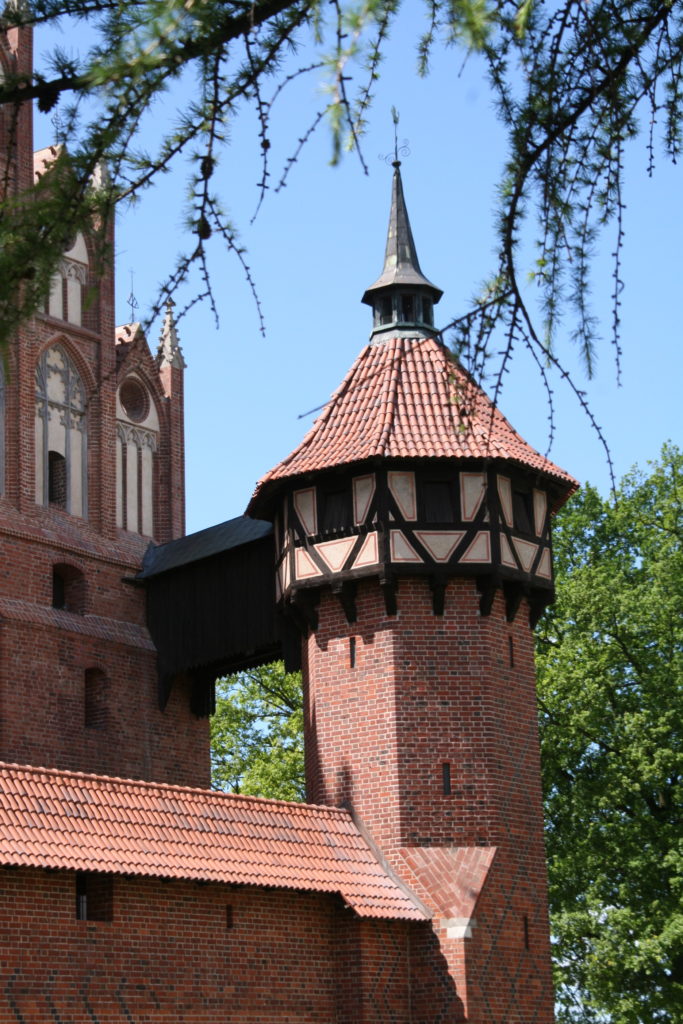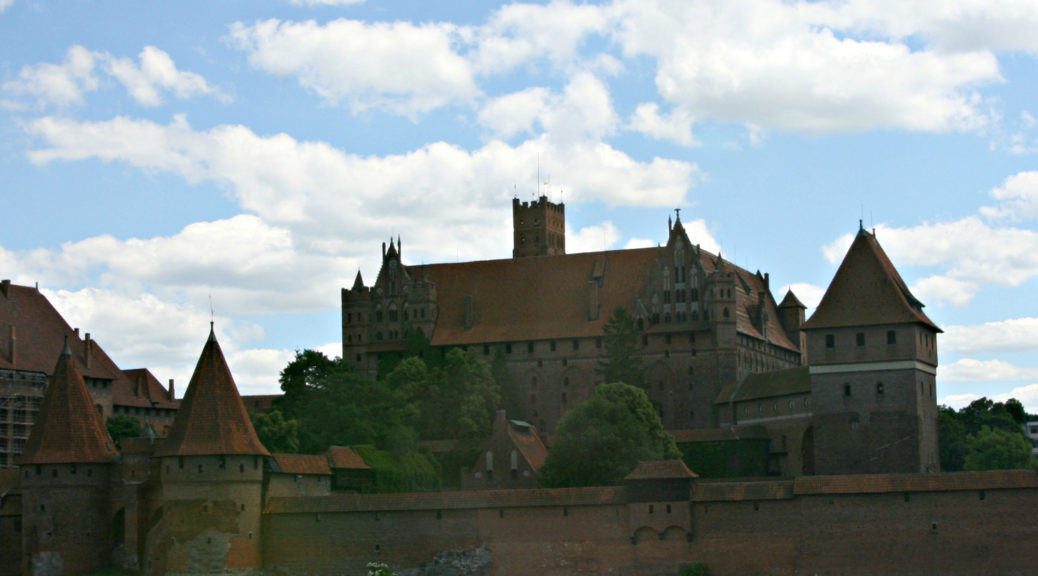
Poland’s Malbork Castle
Our next port of call was Gdansk, Poland, where we would be able to spend most of the day. In this post, I will focus on Malbork Castle, which was a highlight of our shore excursion. Malbork Castle was established as a UNESCO World Heritage Site in 1997. The UNESCO website has interesting information about the castle, some of which I will quote here. First, here is a very concise history of the castle:
This spectacular fortress bears witness to the phenomenon of the Teutonic Order state in Prussia. The state was founded in the 13th century by German communities of military monks who carried out crusades against the pagan Prussians and Lithuanians living on the south Baltic coast, as well as against the Christian Kingdom of Poland. It reached its greatest influence in the 14th century. The castle-convent embodies the drama of late medieval Christianity, straining between extremes of sanctity and violence.
https://whc.unesco.org/en/list/847
The castle has been enlarged and was also restored following severe damage in World War II as noted below:
(Malbork Castle) was substantially enlarged and embellished after 1309, when the seat of the Grand Master moved here from Venice. A particularly fine example of a medieval brick castle, it later fell into decay, but was meticulously restored in the 19th and early 20th centuries. Many of the conservation techniques now accepted as standard were evolved here. Following severe damage in the Second World War it was once again restored, using the detailed documentation prepared by earlier conservators.
https://whc.unesco.org/en/list/847
The pictures below are of the exterior of Malbork Castle as well as pictures I took of displays depicting the damage the castle suffered during World War II.
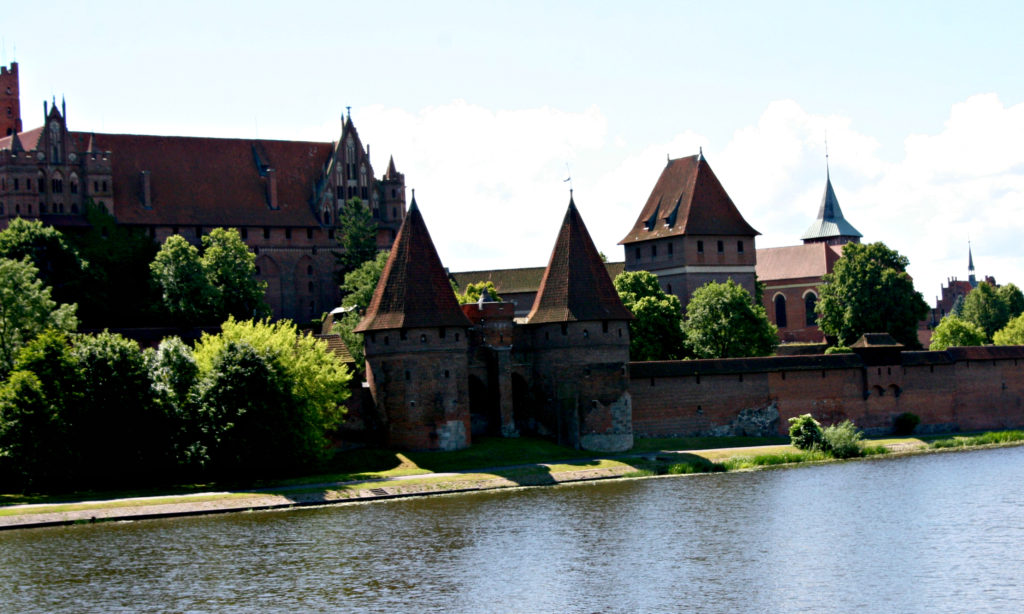
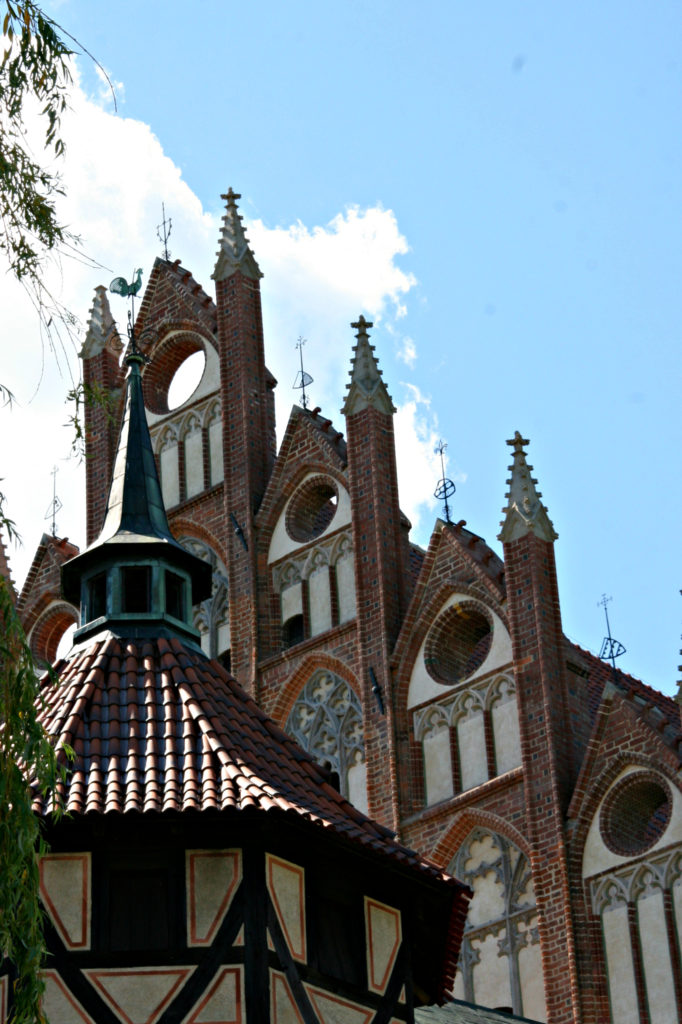
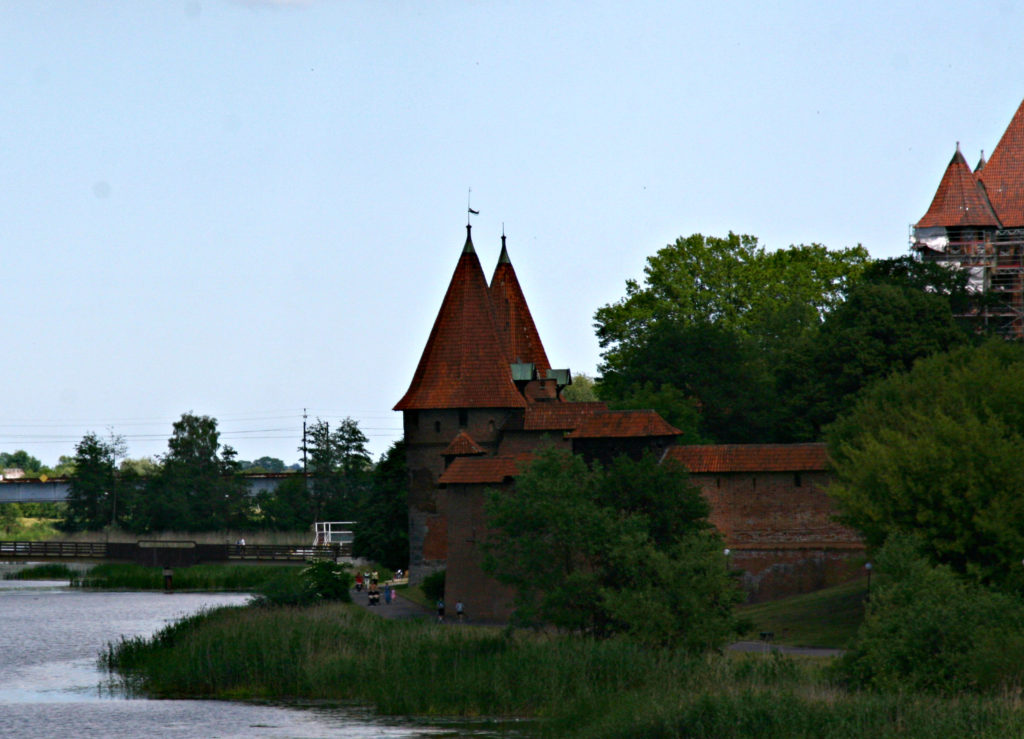
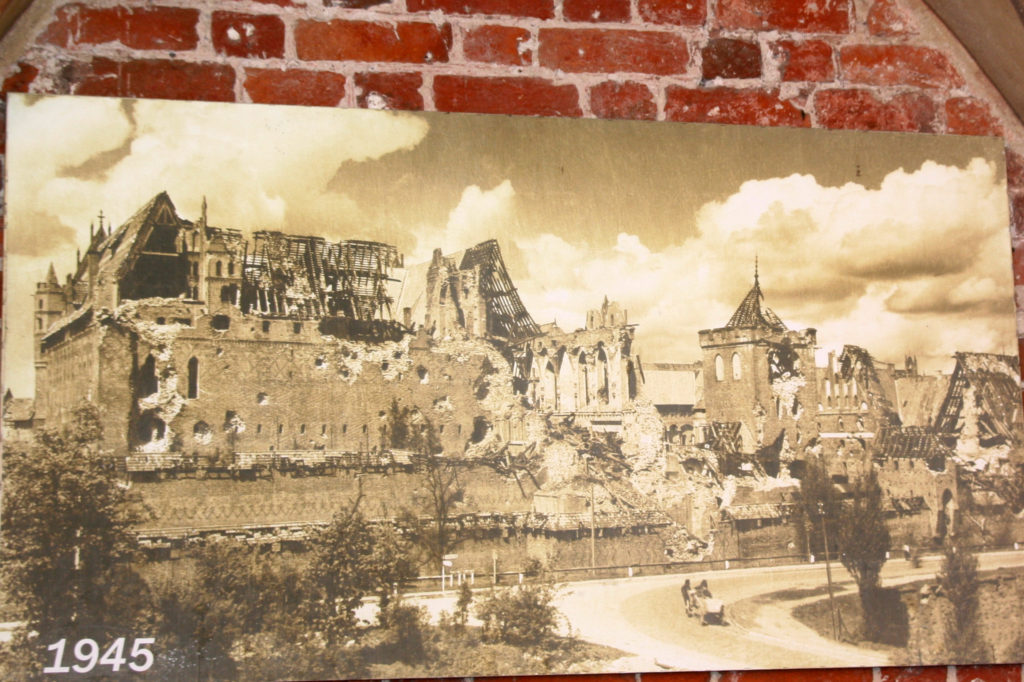
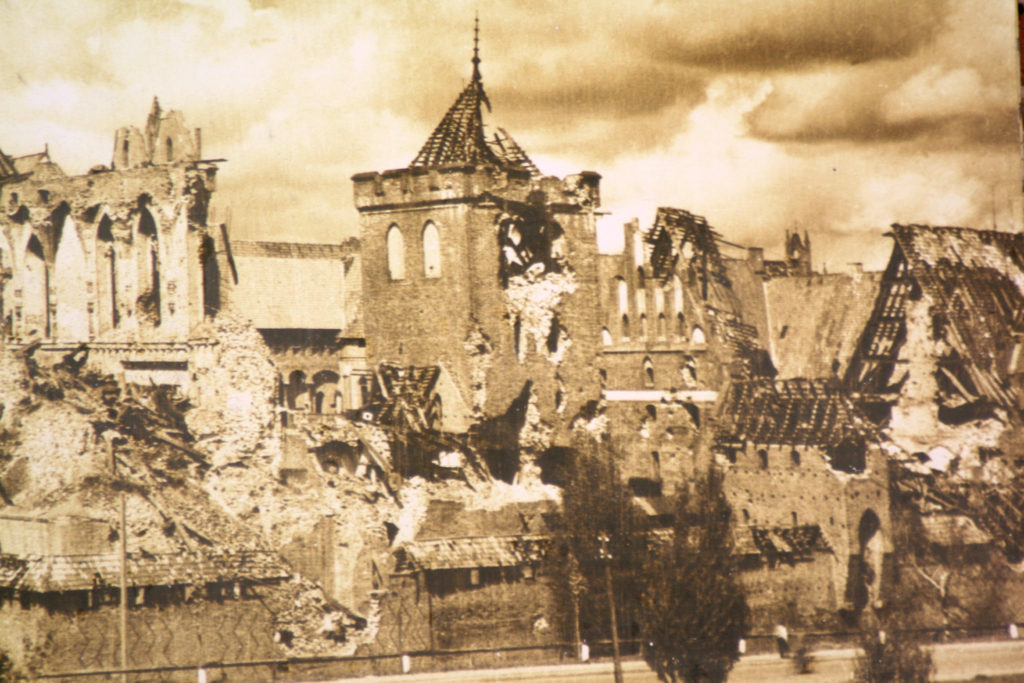
The first picture below is a depiction of the Malbork Castle layout. It sits on a 52 acre site and lies along the Nogat River. This gave the Teutonic Knights the ability to collect tolls from passing ships. The complex consists of three castles connected by a fortification system. The green pin marks the area of the Lower Castle, the blue pin identifies the Middle Castle, the yellow one shows the location of the Grand Masters’ Palace, and the red pin marks the High Castle.
Our tour began at the main entrance of the middle castle. We crossed a bridge over the moat. There are then multiple gates which could be lowered quickly if the castle was under attack. There is also a bas relief of the Virgin Mary with Jesus above one of the gates. This is a symbol of the protection she provides over the castle.
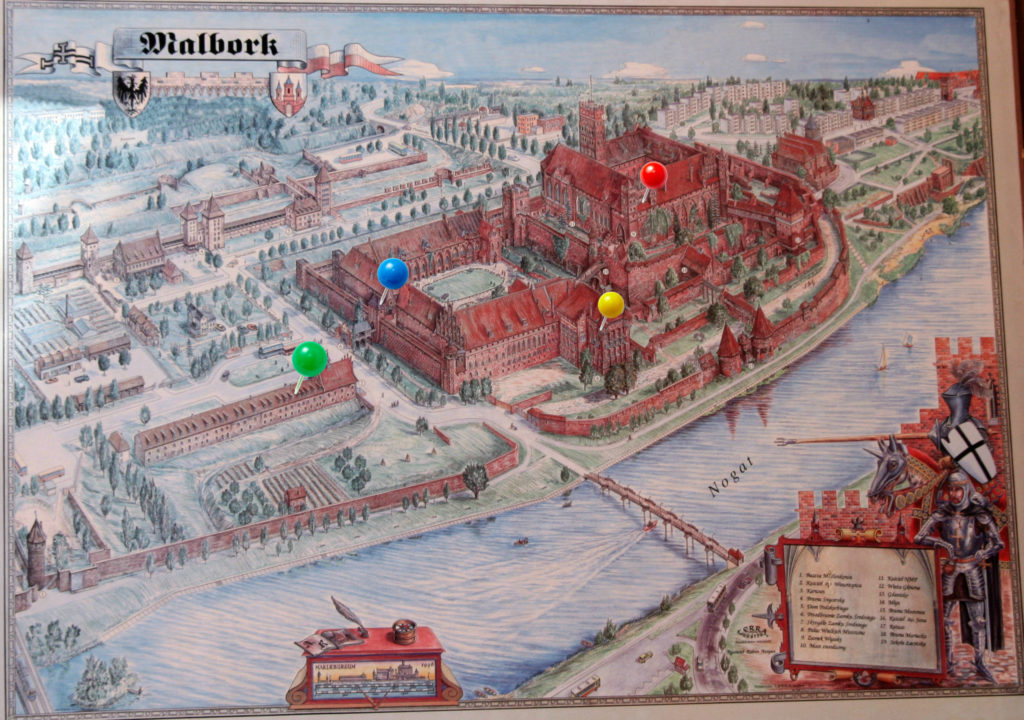
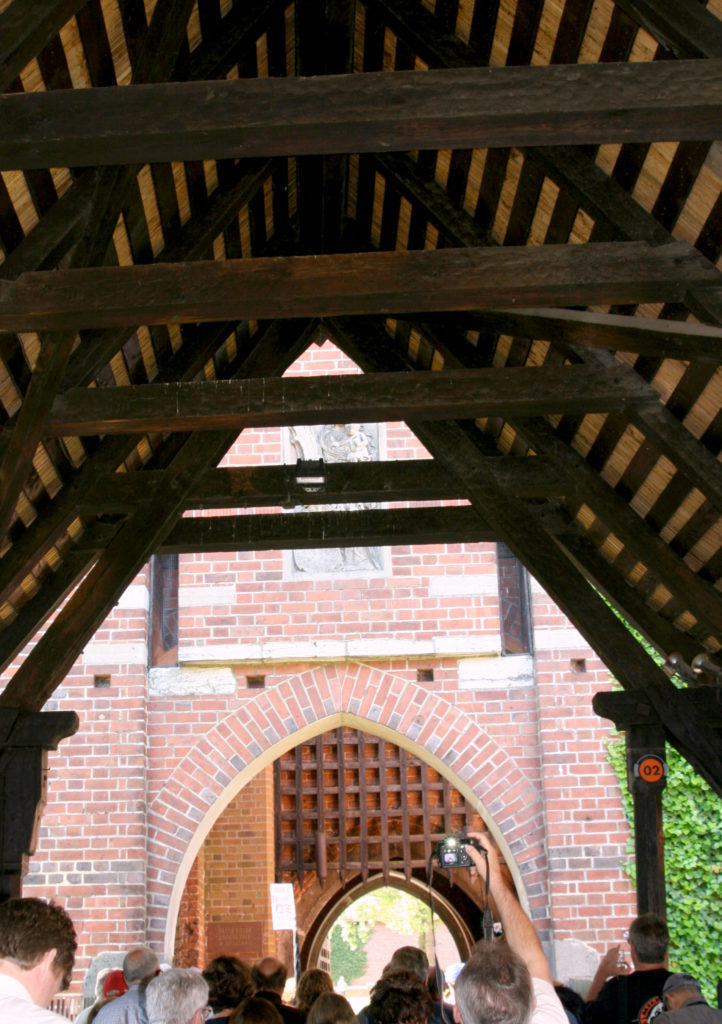
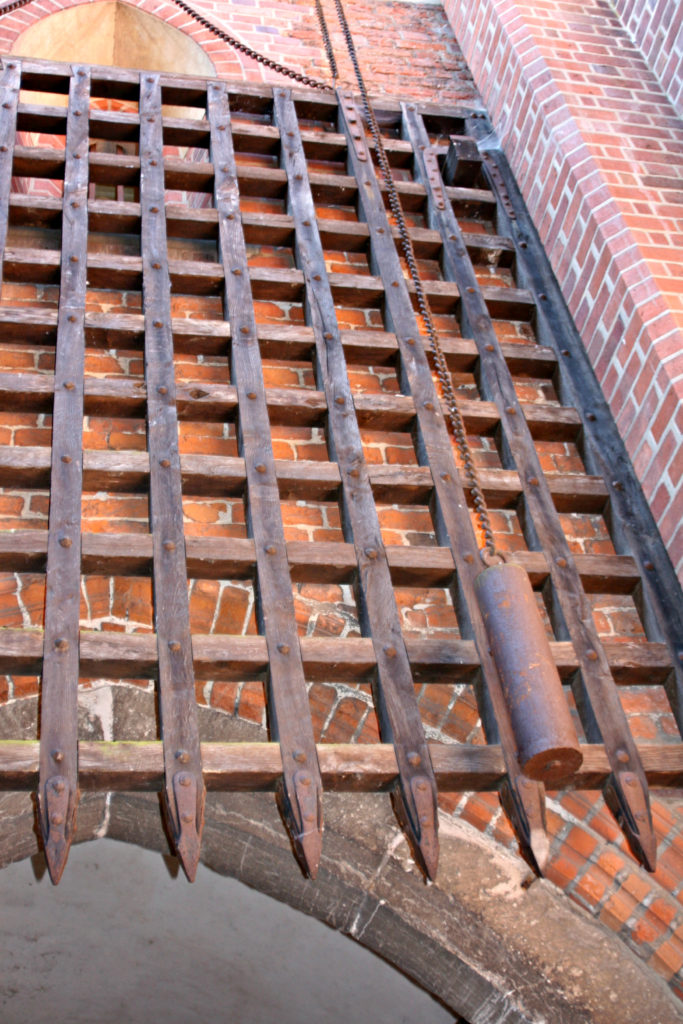
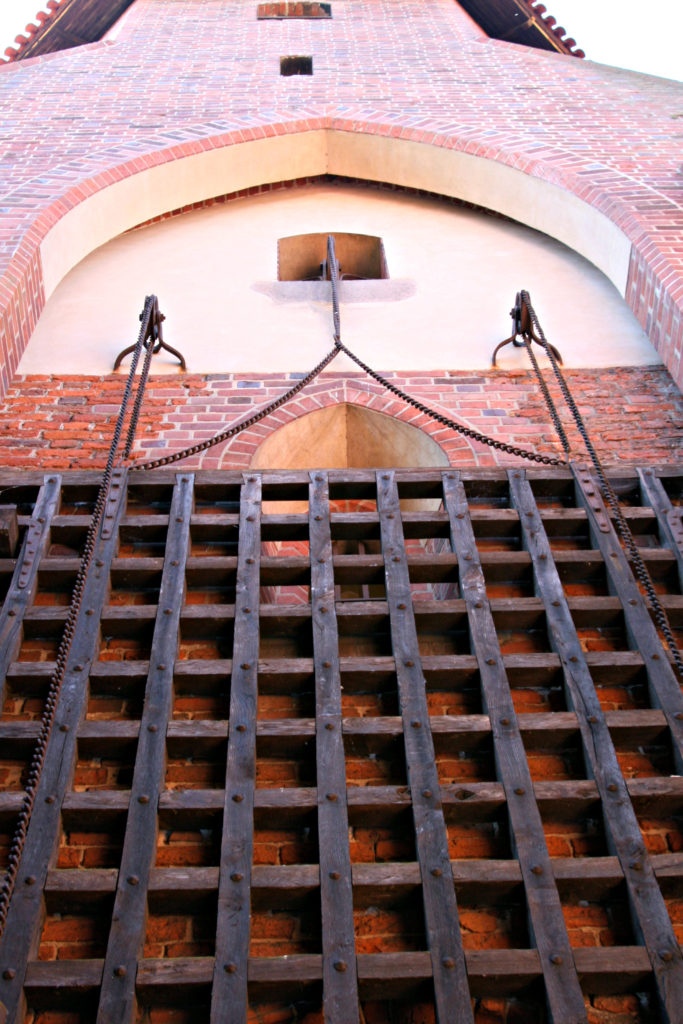
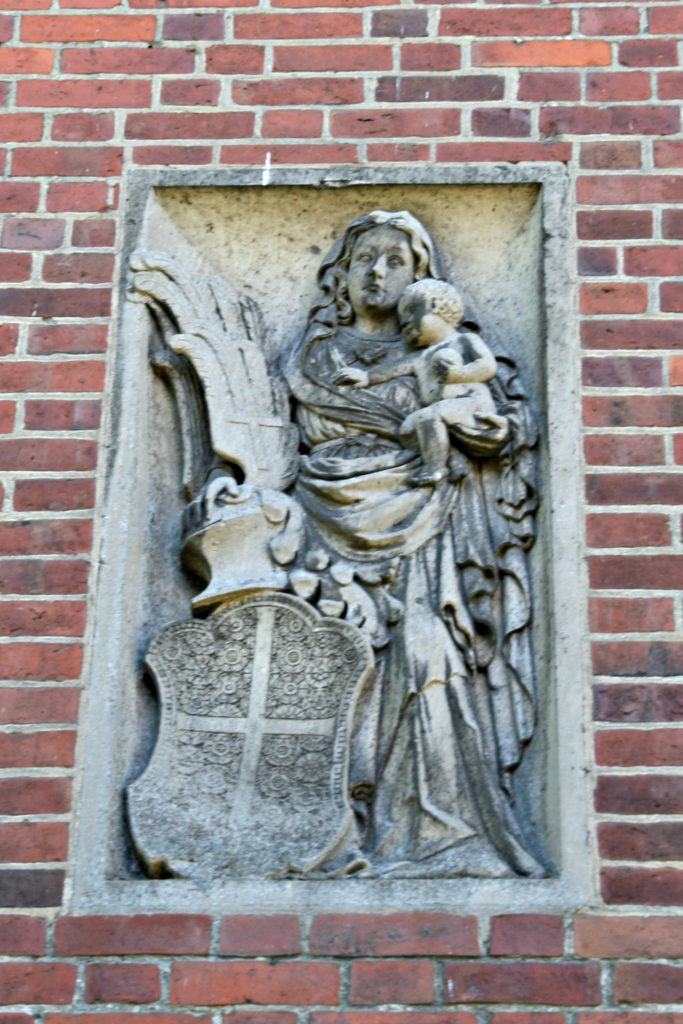
We next went to Halberd Hall which is on the lower level of the Middle Castle. In medieval times, it was used as a storehouse, but today it showcases an amber exhibit. Amber is sometimes called “the gold of the north” and was highly valued by both the Romans and the Greeks. The Teutonic Order declared the amber in the area to be their property and controlled the extraction of amber as well as its trade.
The pictures below are of Halbert Hall and some of the amber pieces on display. These have also been loaned for displays in museums including the United States, Germany, Sweden, Japan. The piece in the center of the second picture is a home altar with the Virgin Mary and Jesus. The amber in the last picture is a coffer, which would be used to hold valuables. Both of these pieces date back to the second half of the 17th Century.
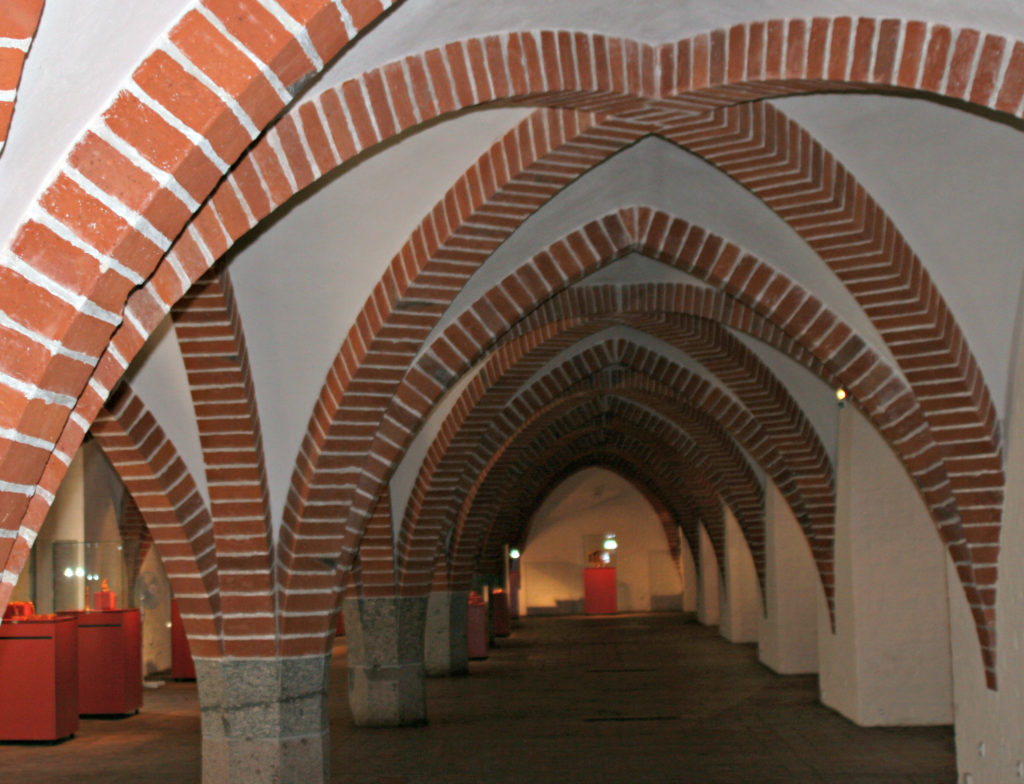
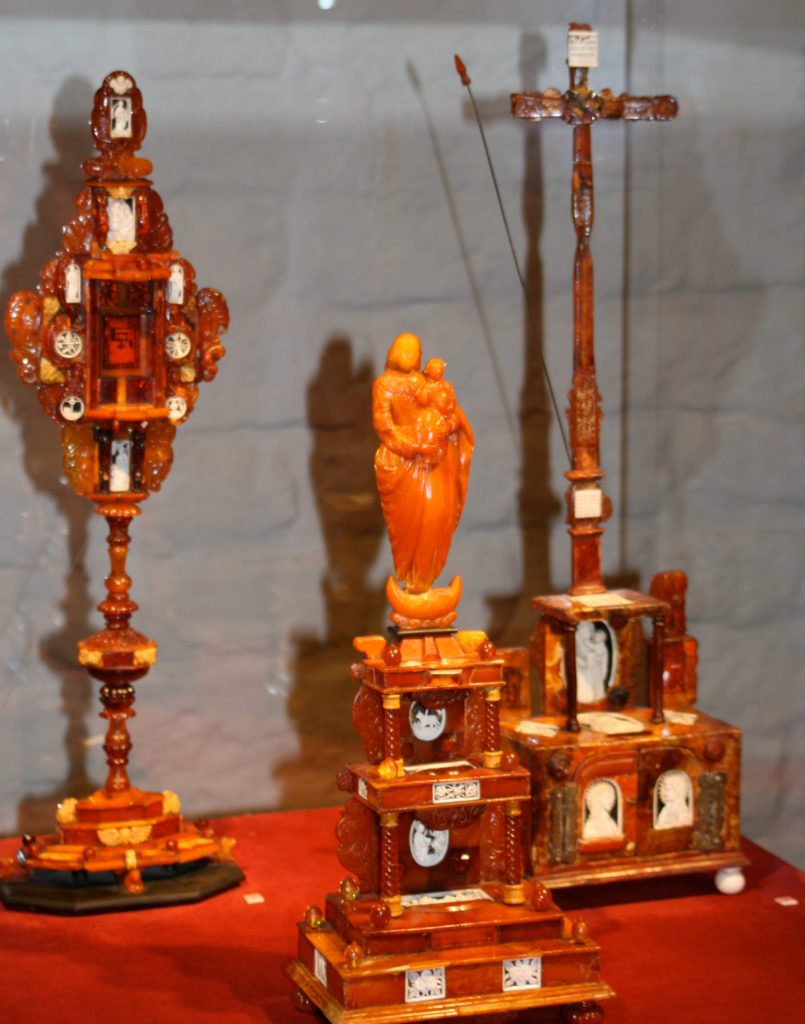
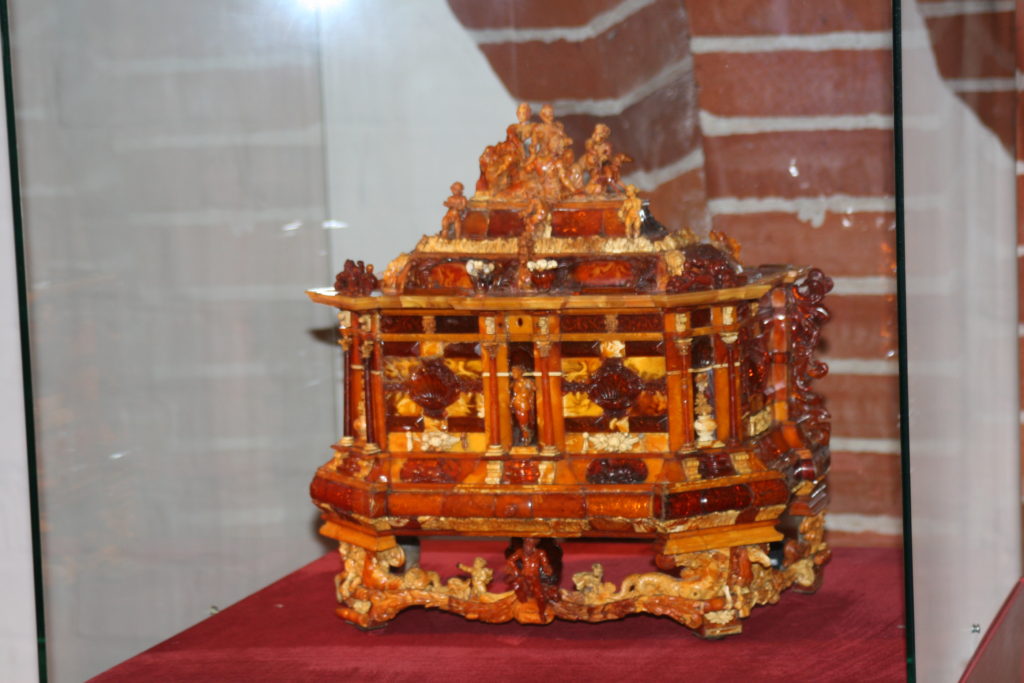
The next three pictures were taken in the Middle Castle Courtyard. The first is a stone basin. There is a bas relief over it (also see close-up in the second picture) which was added by those working to restore the castle in the 1900s. It depicts Jesus by Jacob’s well. The last picture is a bombard or early canon which fired stone balls.
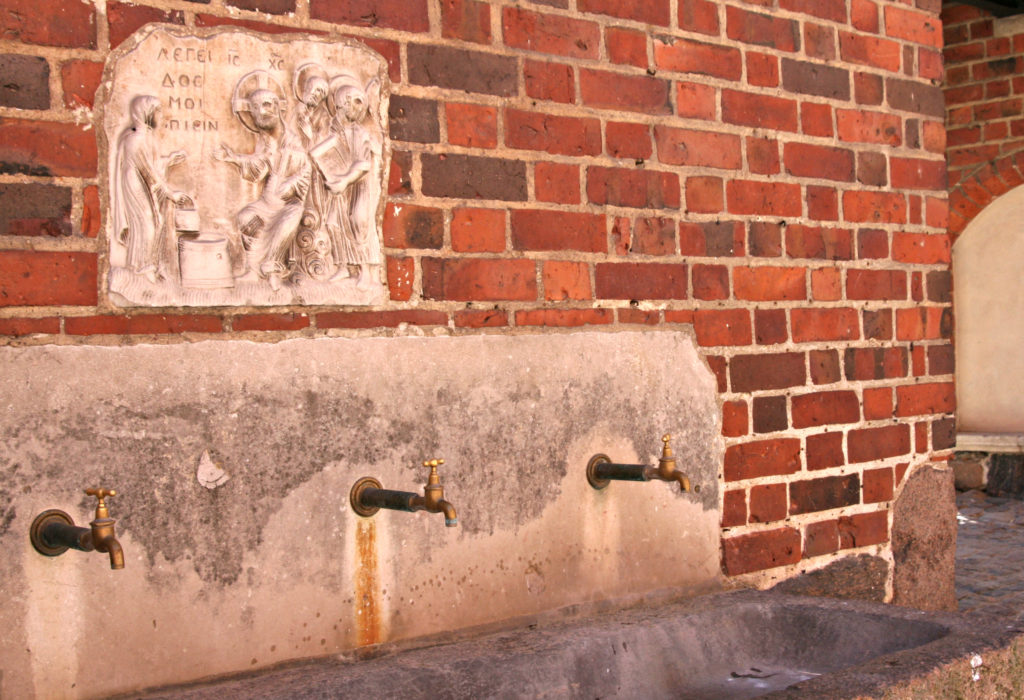
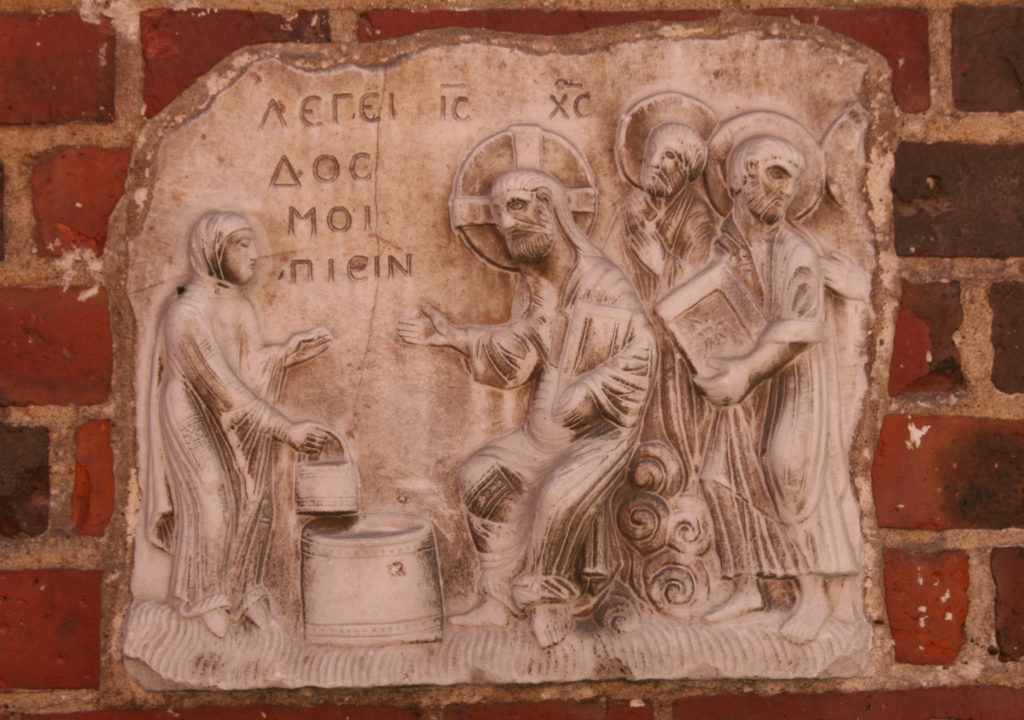
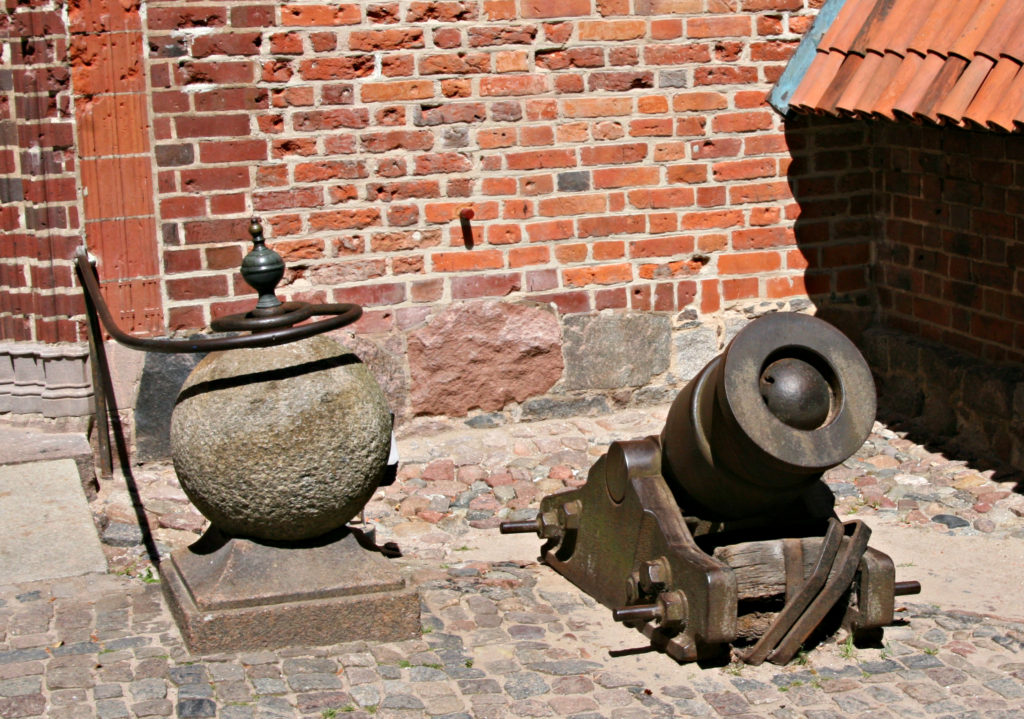
The next pictures are of the Summer Refectory which is located in the Grand Masters’ Palace. This was where Grand Masters would receive foreign dignitaries and other important guests. Many of the windows were stained glass, but these were damaged during World War II. Some of the paintings on blind windows have survived (third picture).
In the last picture in this section, you will see a cannonball lodged in a blind window. This probably hit during the Battle of Grunwald in 1410, part of the Polish-Lithuanian-Teutonic War. The Teutonic Knights lost this battle, although the castle survived and they lost little land. But as a result of this war, the power shifted from the Teutonic Knights to Poland and Lithuania.
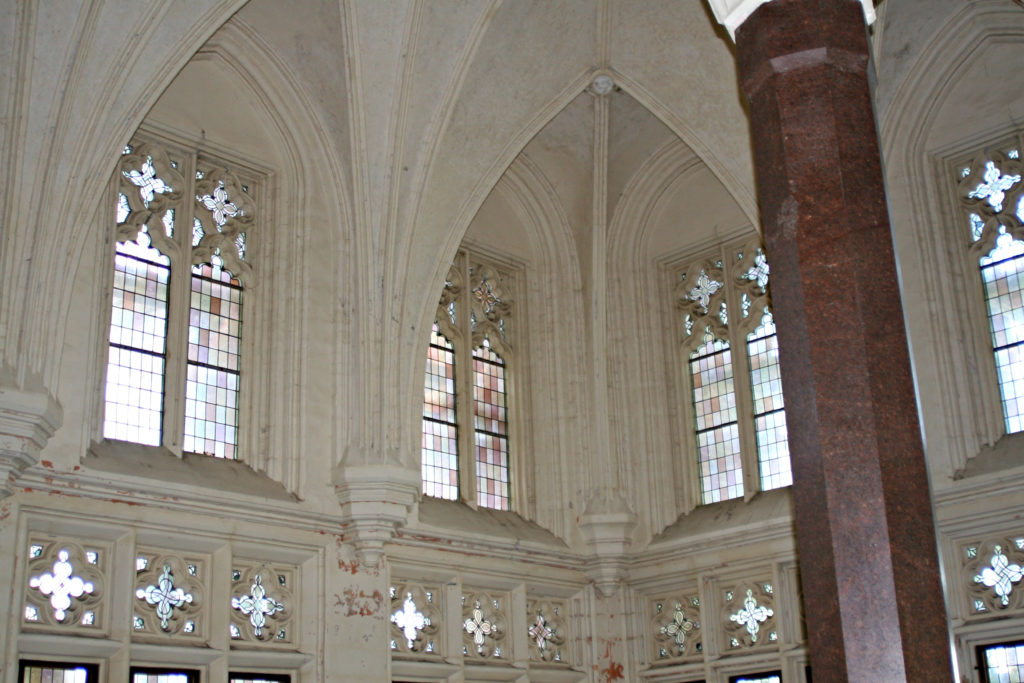
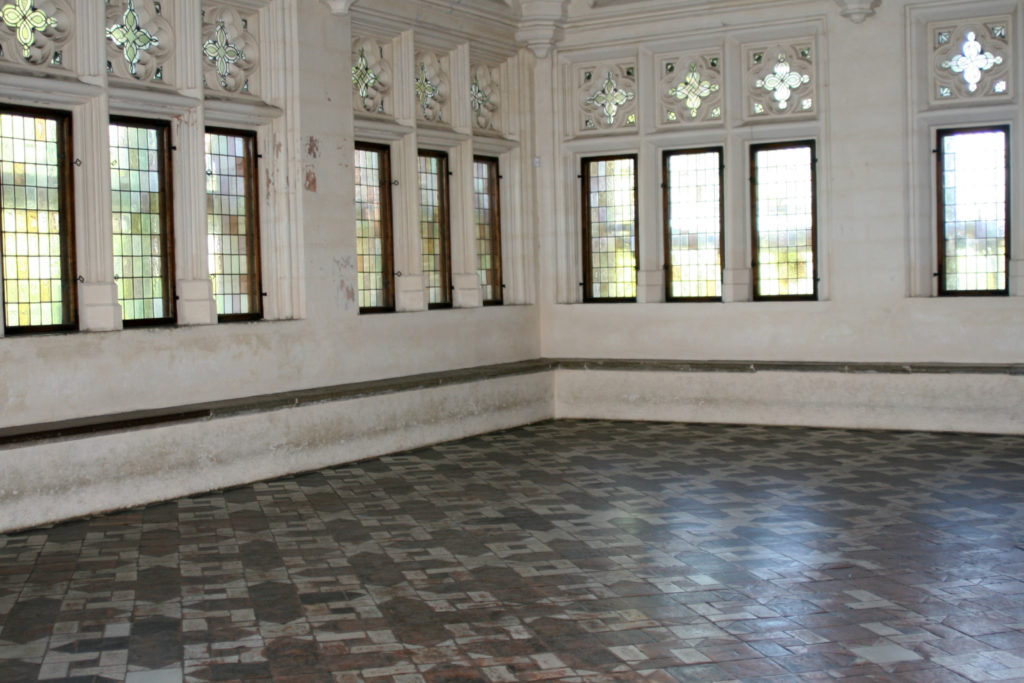
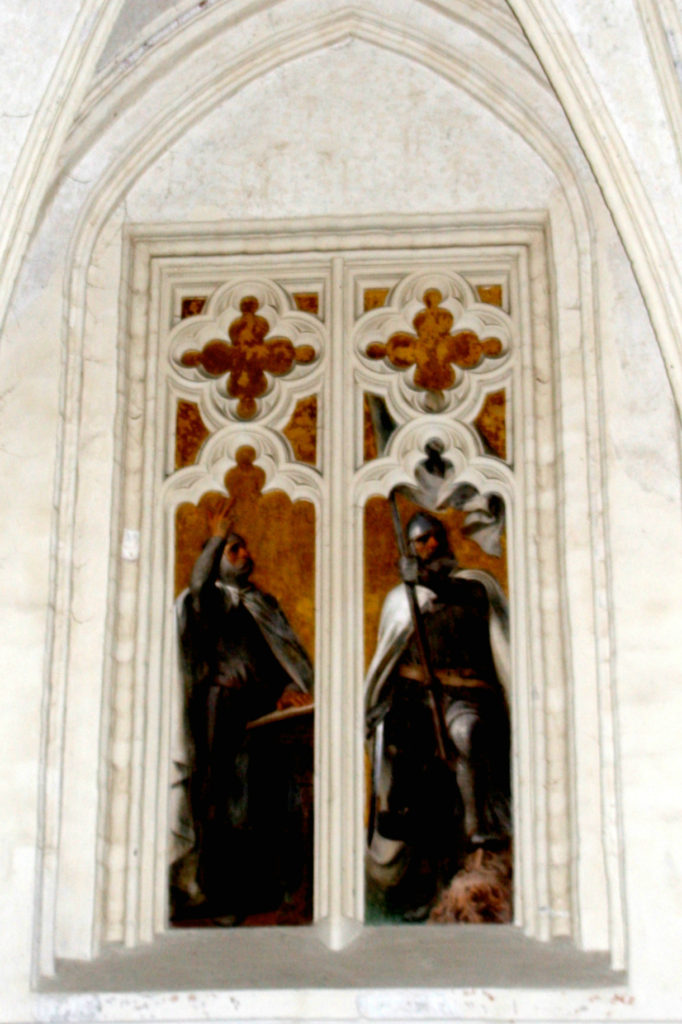
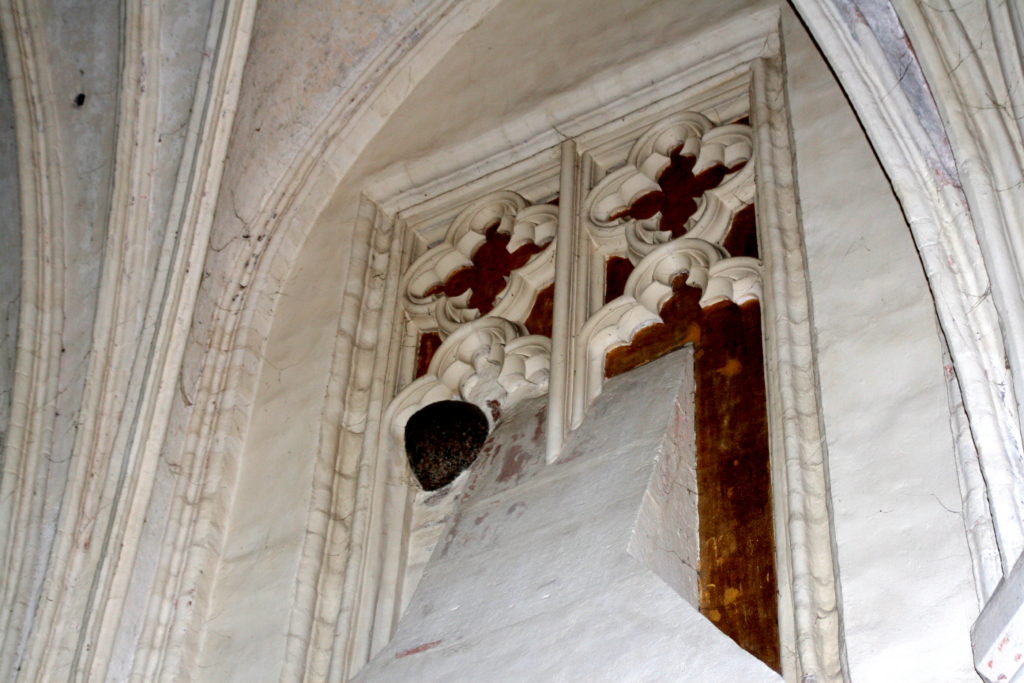
A drawbridge connects the middle and high castles, allowing people to cross over a deep moat. Chains were used to raise and lower the drawbridge controlled by a reel which you will see in the second picture. Walking through the gates led us to another courtyard. I have also included a few pictures of the exterior of Malbork Castle, depicting the thickness of the walls which provided protection.
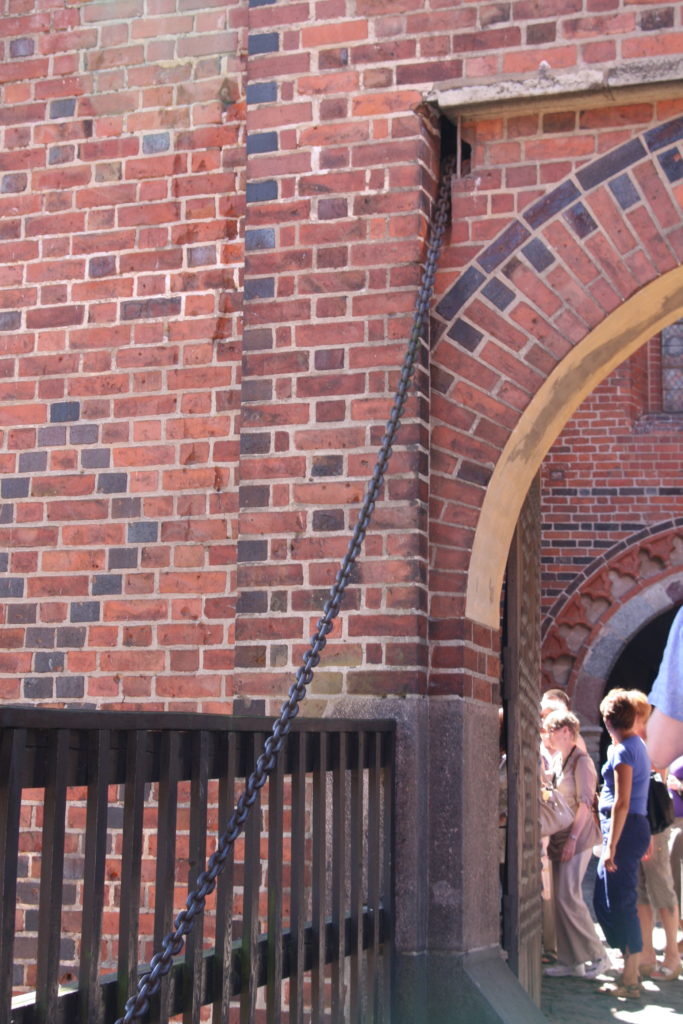
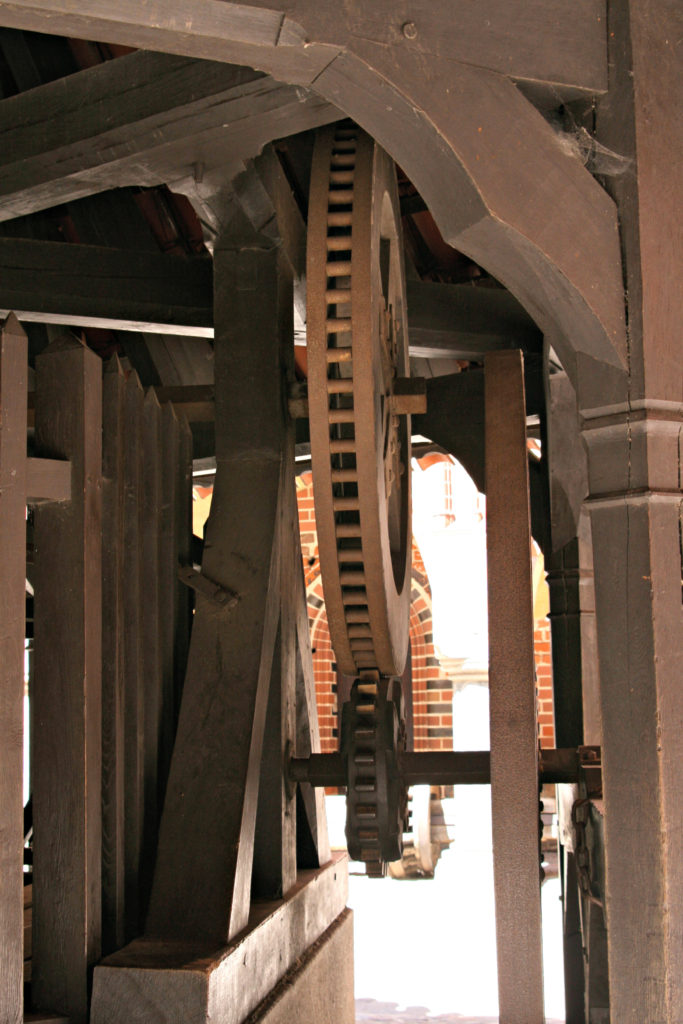
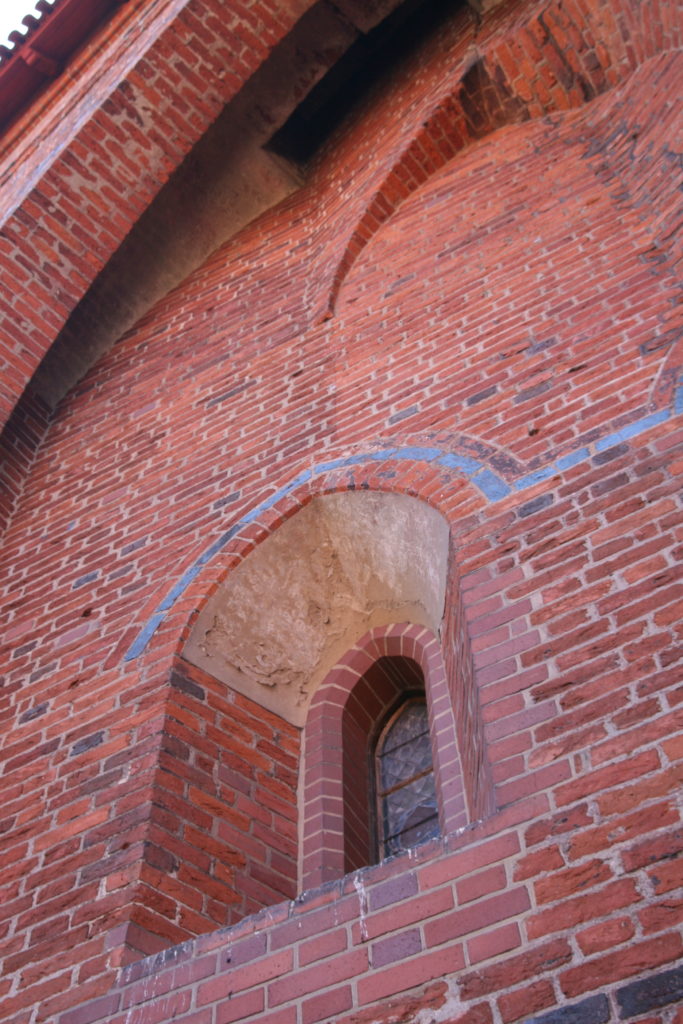
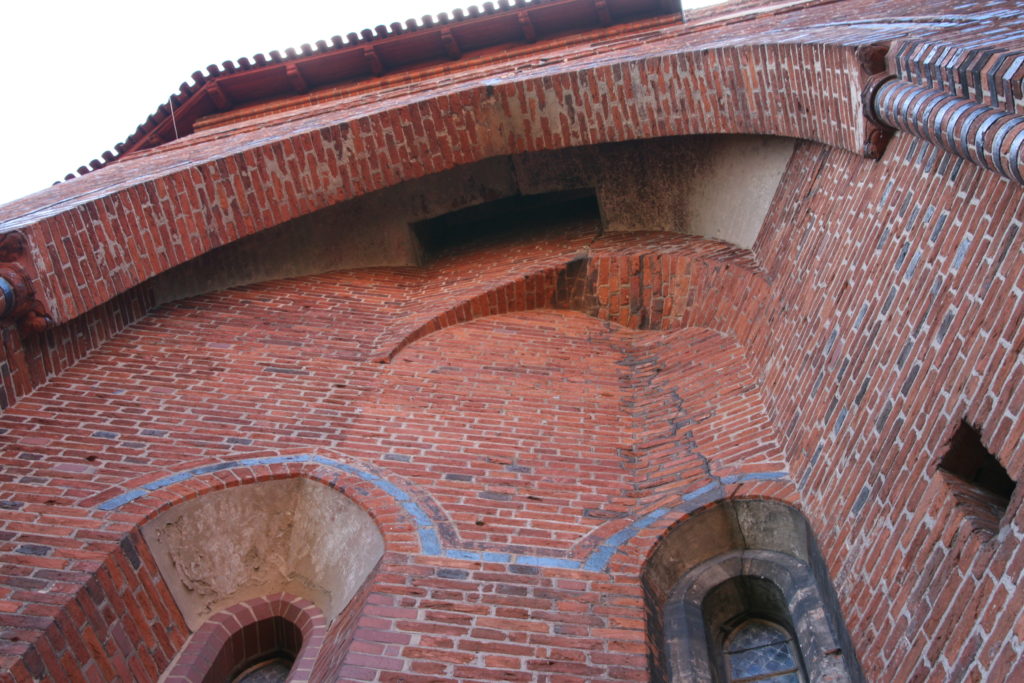
The next pictures were taken in the Chapter House of the High Castle. The Chapter House was where important issues would be discussed and decisions made including matters of state, foreign policy and the election of Grand Masters. The space was largely empty, just having seats for those participating in the discussions (first picture). This is followed by a painting of the crucifixion which dates back to 1898 so is relatively new. Beneath this is another painting from the same time period depicting three convent virtues, these being poverty, purity and obedience. There are also pictures of the ceiling and floor. Note the metal in the floor which was part of the heating system used throughout the castle complex.
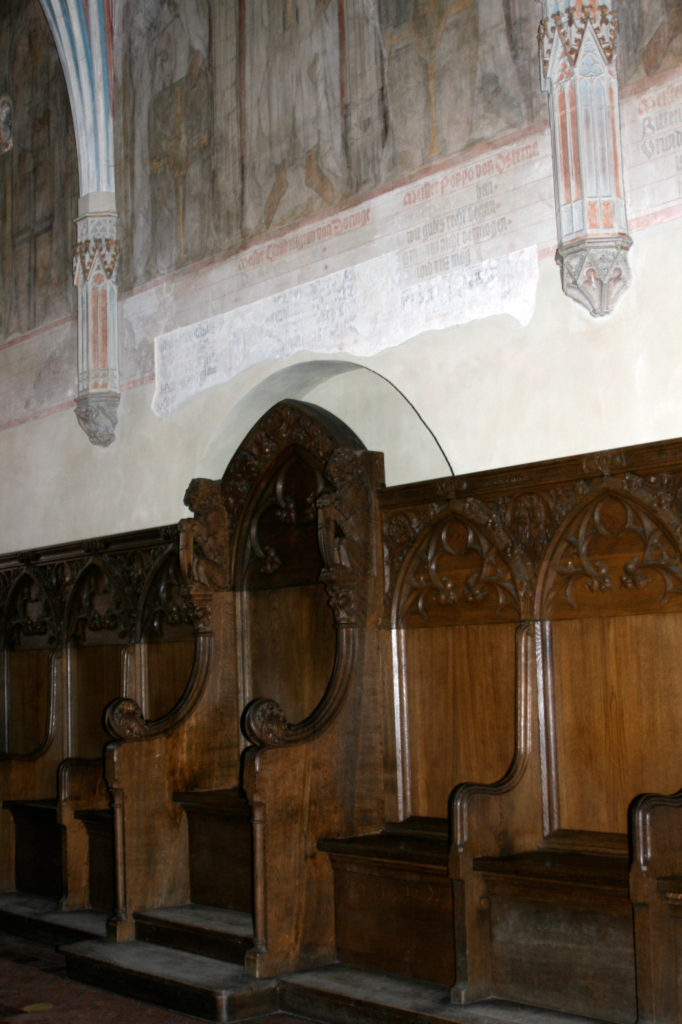
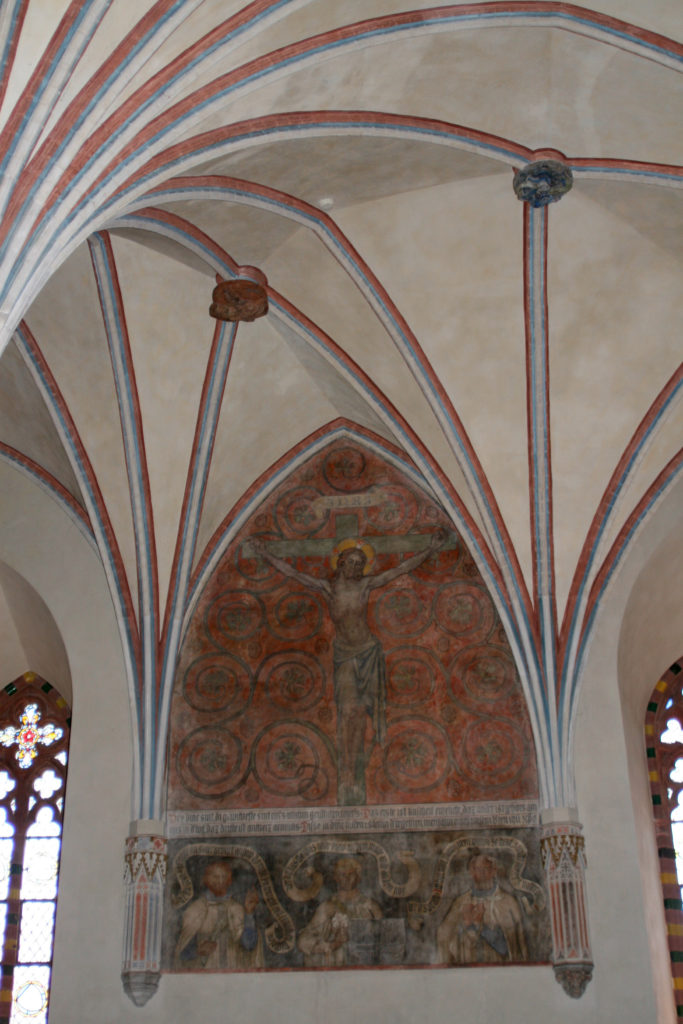
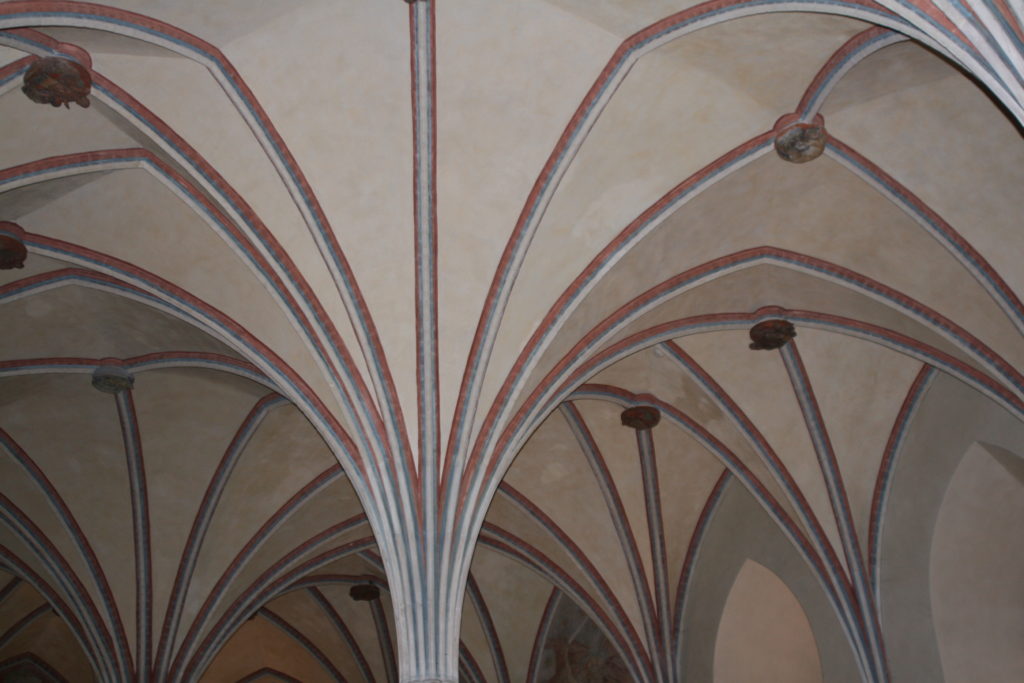
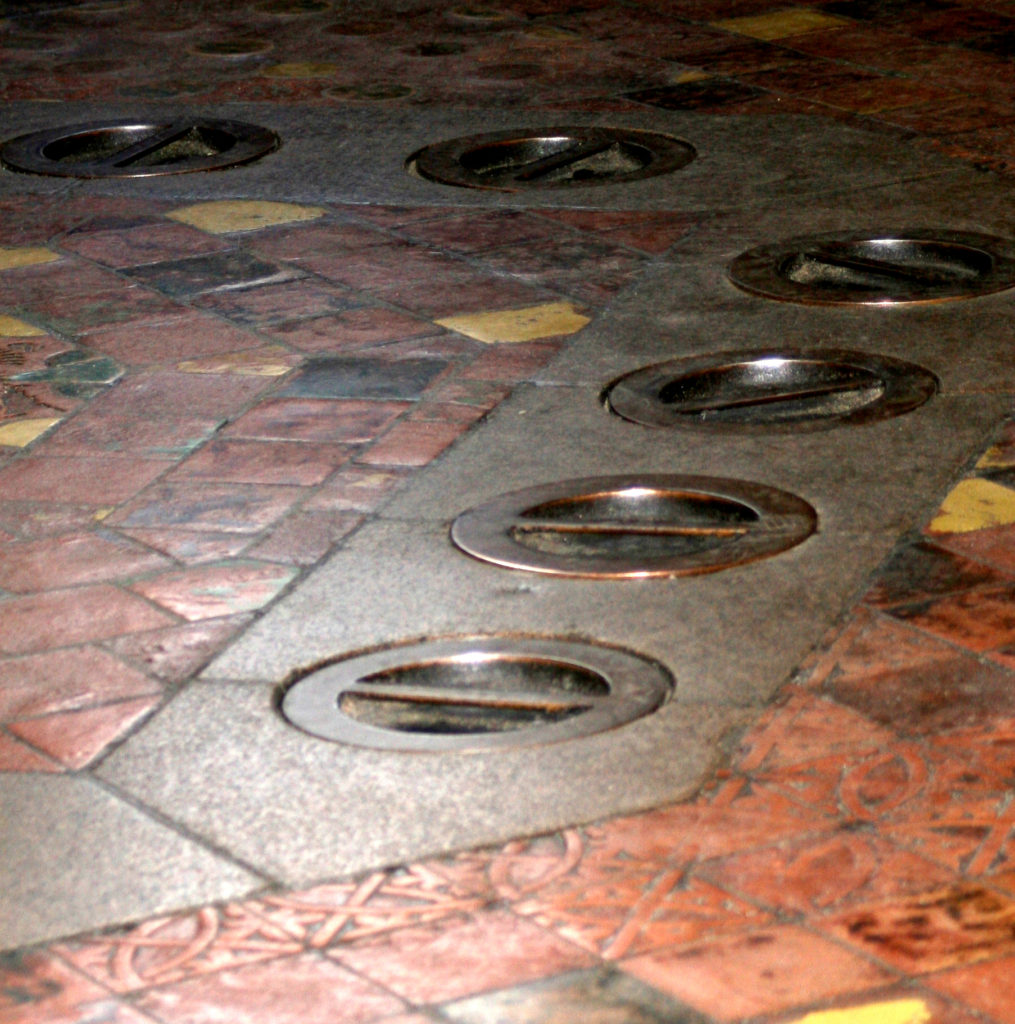
We next visited the Blessed Virgin Mary Church, also located in the High Castle. This was built early on with an inscription documenting the church’s completion in 1344. It was heavily damaged in battles and was still under renovation when we visited in 2010. In reading more about Malbork Castle, I learned that these renovations were completed in 2016. The first picture below shows an entrance door. This is followed by a picture of the main altar. The third picture is of a matroneum, which in medieval times, was an architectural element along one of the side aisles of a church. The last pictures in this section are of a bench and some of the statues in the church.
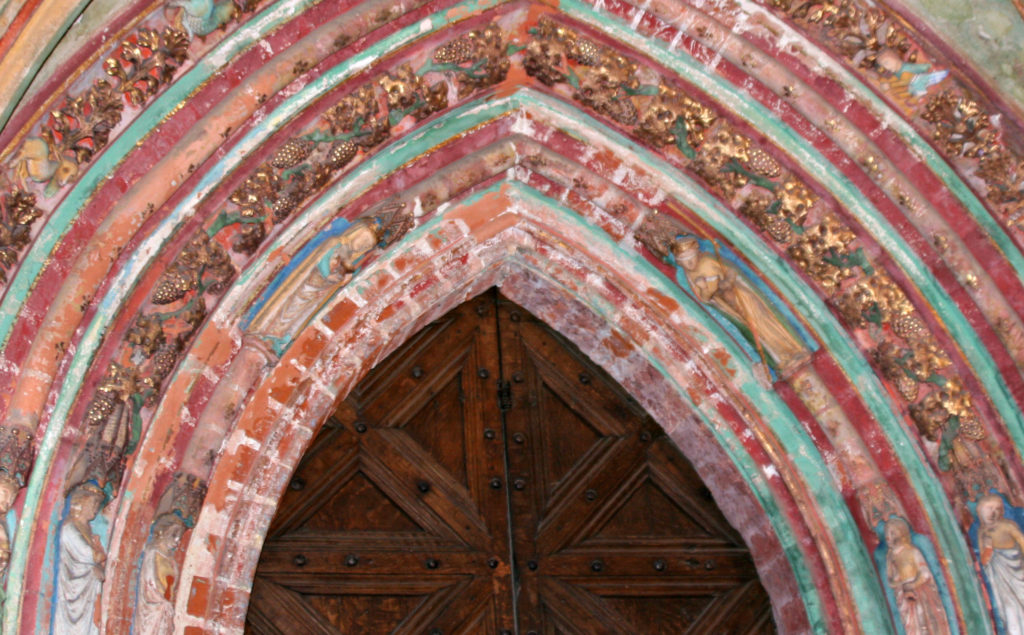
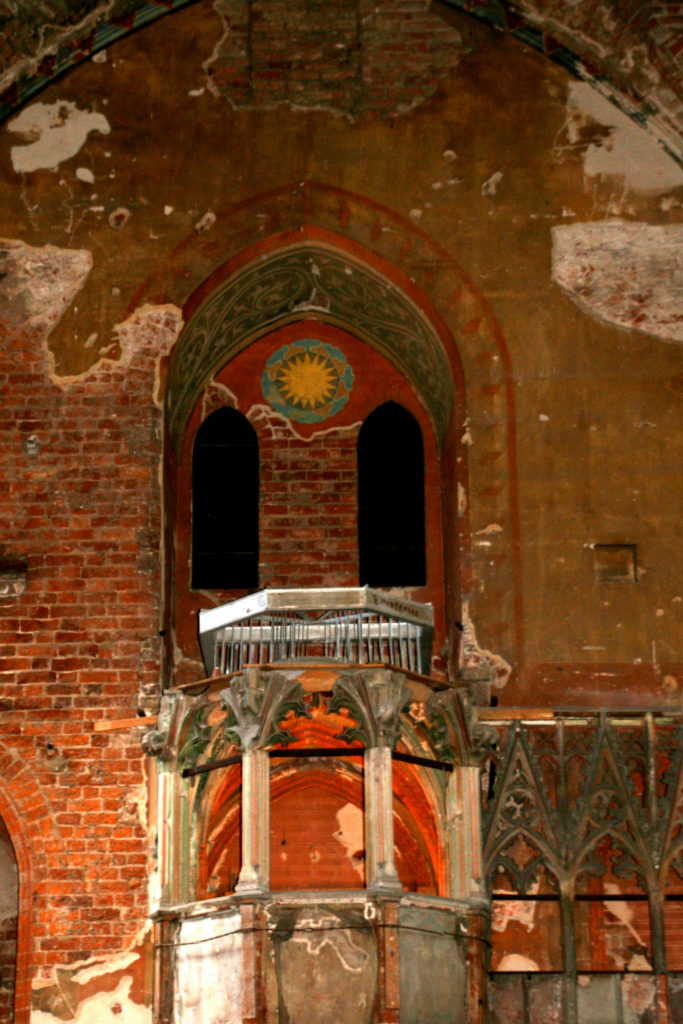
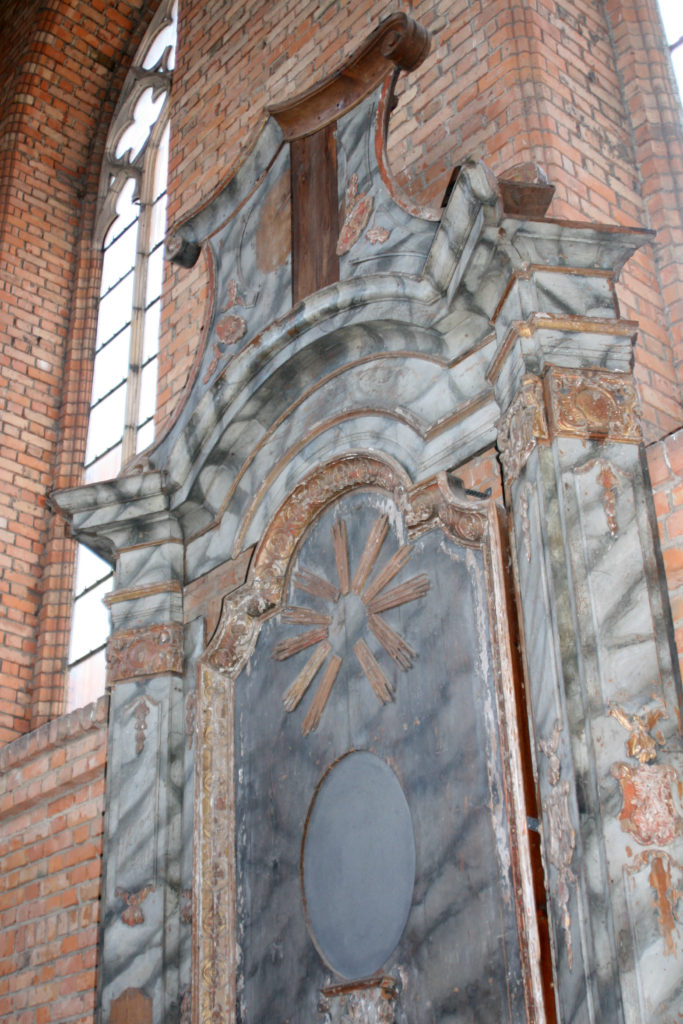
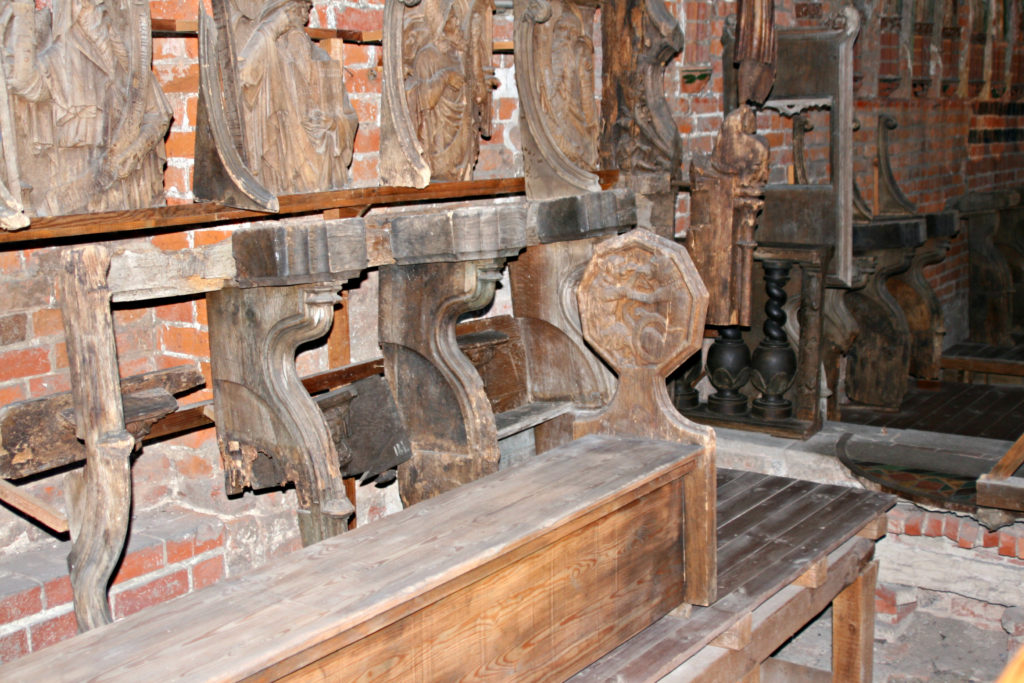
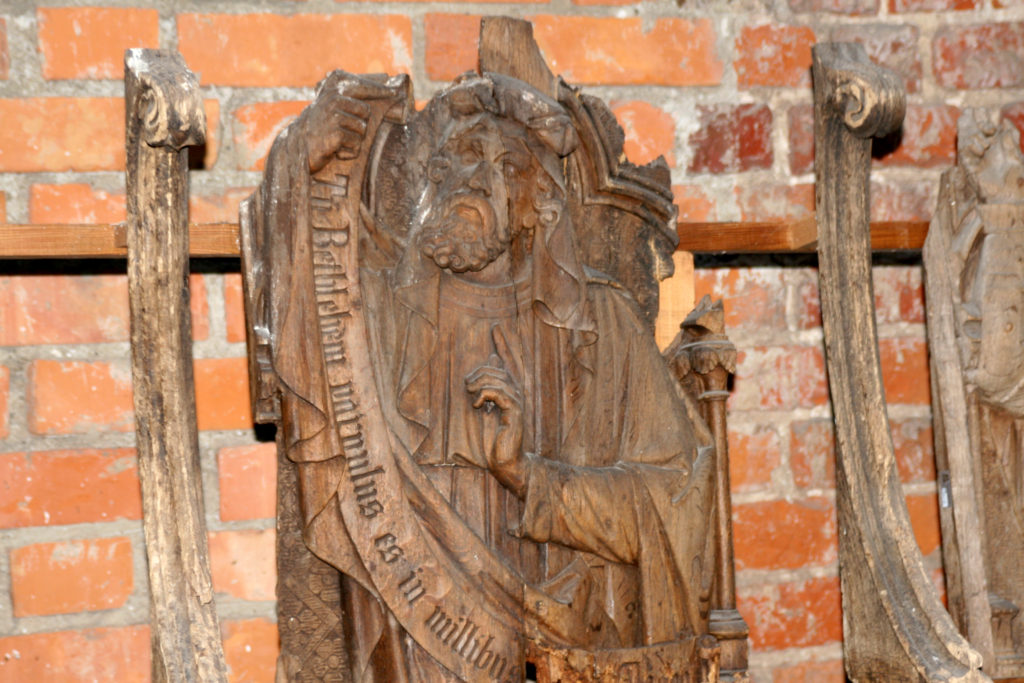
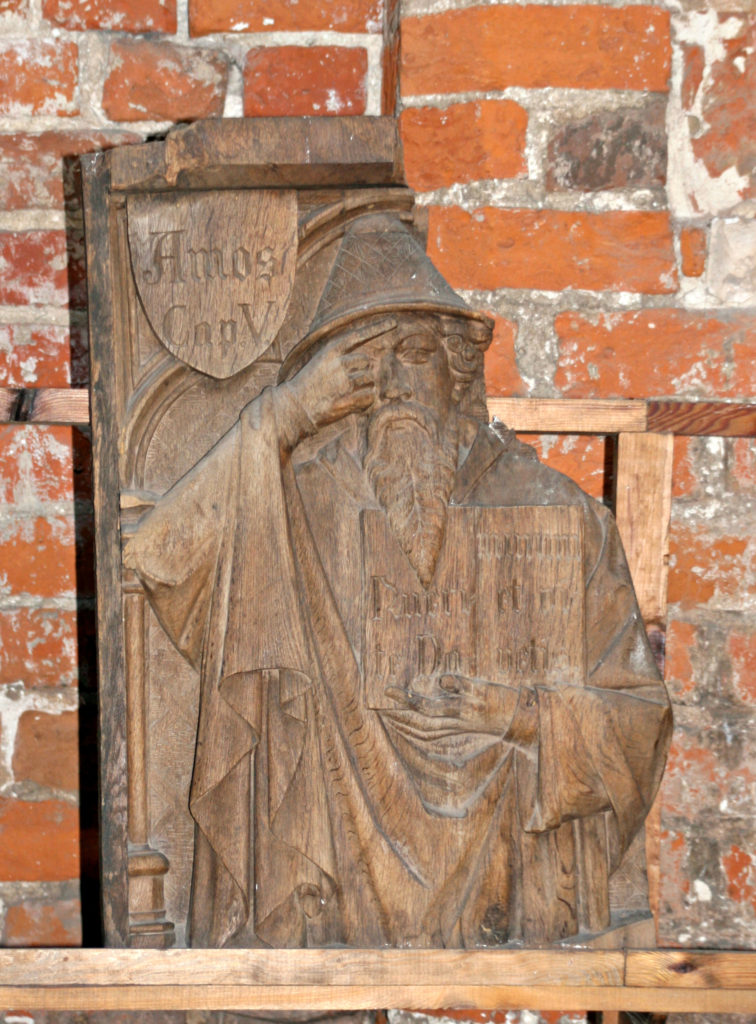
These pictures were taken in the courtyard outside the High Castle. In the second picture, there is a pelican feeding its baby. This was a common symbol in churches in medieval times because pelicans would feed their own flesh to their young. The third picture in this section is a display including many cannon balls. After walking through the courtyard, we went to our bus from which we would get our last looks of the Malbork Castle. These are the final pictures in this post. You will notice some of the holes in the wall designed to allow those inside the castle to attack with minimal risk to being hurt themselves. One of the pictures also shows part of the moat around the castles. We were at Malbork Castle for several hours but could easily have spent the whole day. As I read more about the castle, I would guess we saw at the most only half of what we might have visited. It is a remarkable place.
